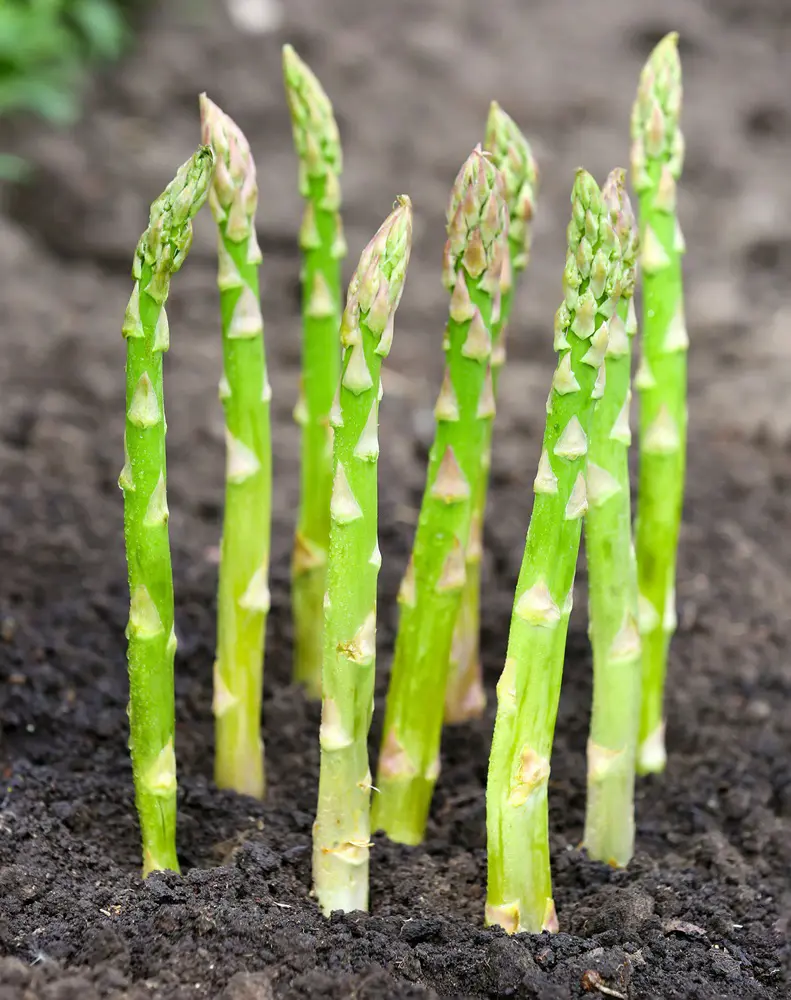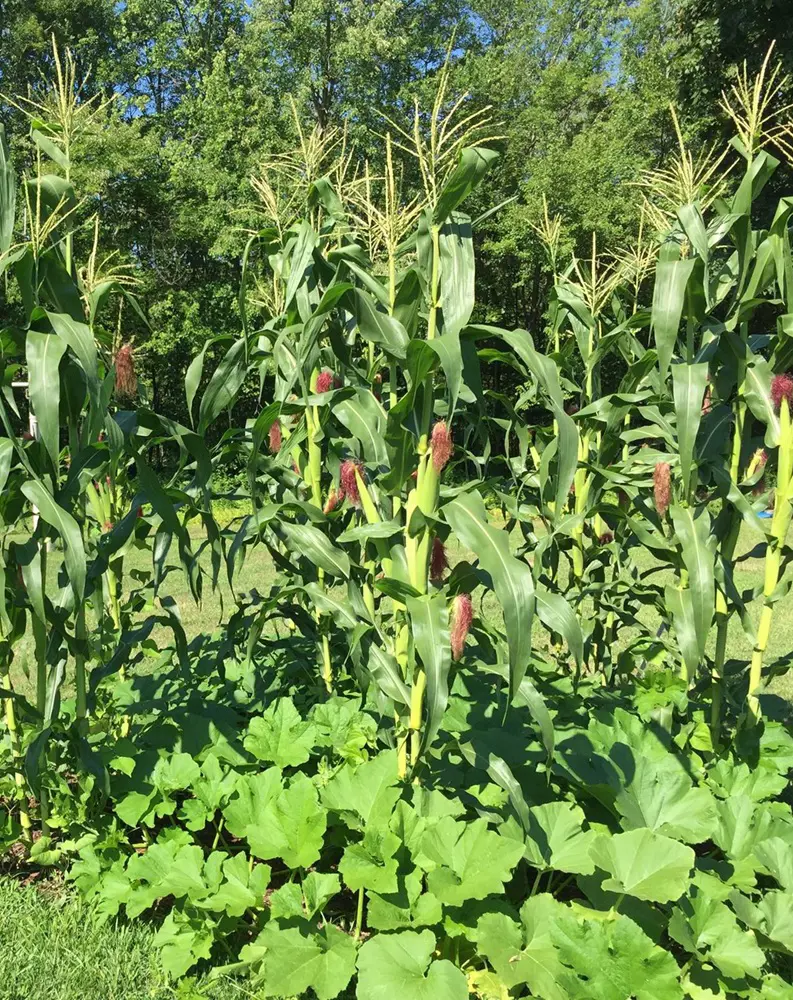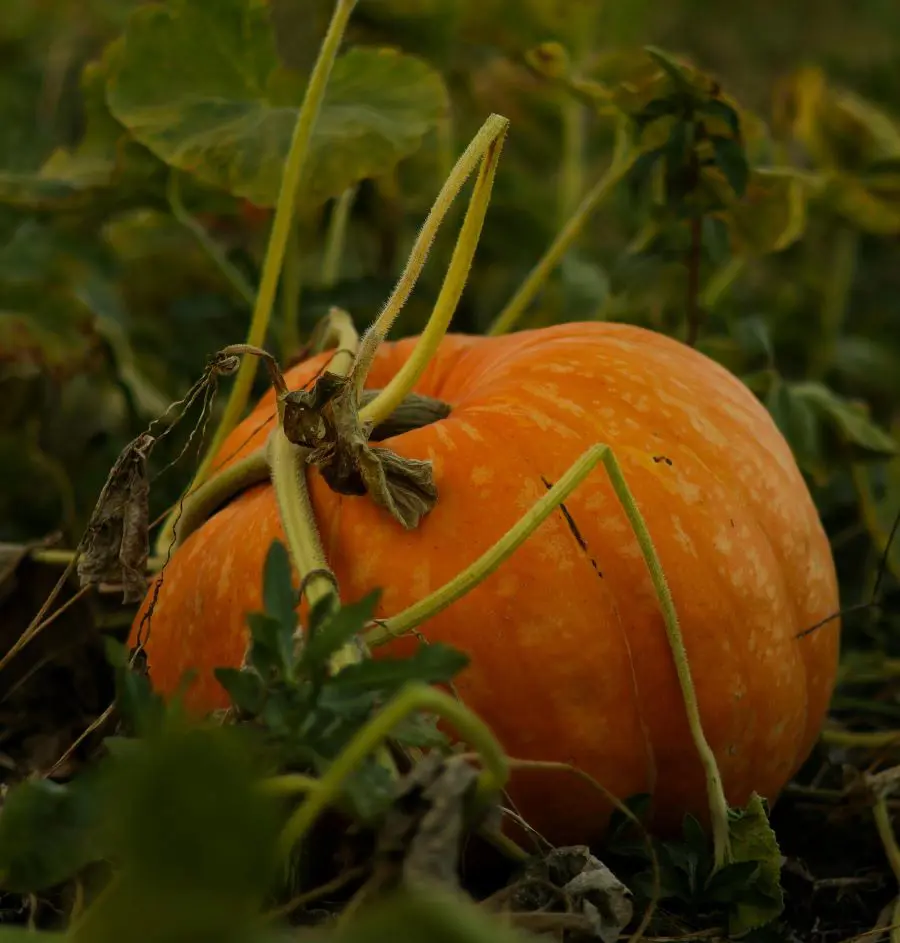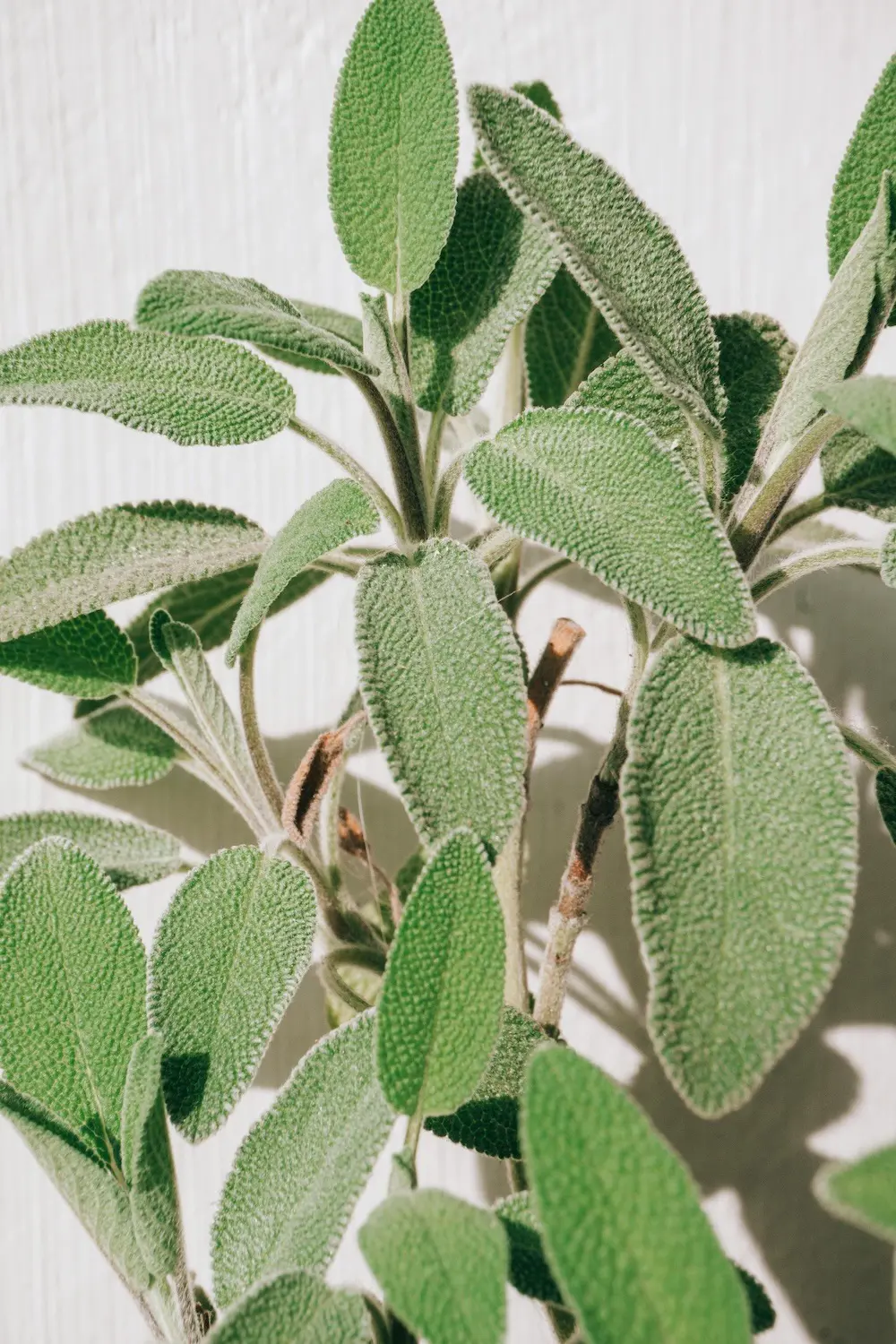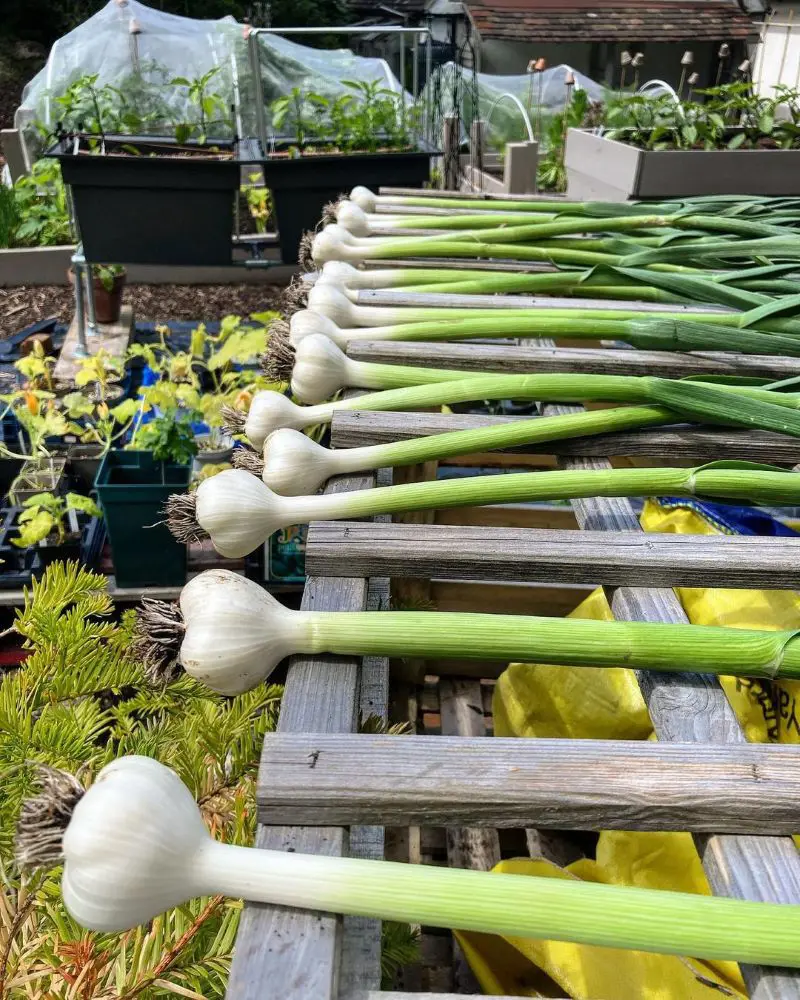Asparagus, a perennial vegetable known for its tender spears, thrives when paired with the right companion plants. Companion planting involves strategically growing plants together to enhance growth, repel pests, and improve yields.
Here, we explore fifteen ideal companions for asparagus: basil, dill, marigold, parsley, strawberries, nasturtium, peas, eggplant, tomato, lettuce, spinach, cilantro, comfrey, petunias, and nightshades.
1. Basil
Basil, a fragrant herb, complements asparagus by repelling common pests such as aphids, asparagus beetles, and mosquitoes. Its aromatic leaves not only deter harmful insects but also enhance the growth and flavor of neighboring plants.
Additionally, basil attracts beneficial insects like bees, which improve pollination and contribute to a healthier garden ecosystem. This makes basil an excellent companion plant for asparagus, promoting both plant health and productivity in the garden.
2. Dill
Dill is an excellent companion for asparagus. This herb attracts beneficial insects such as ladybugs and hoverflies, which prey on harmful pests. Additionally, dill's deep roots improve soil structure and enhance nutrient availability, creating a more robust growth environment for asparagus.
The mutual benefits of dill and asparagus result in healthier plants and higher yields, making this pairing a valuable addition to any garden.
3. Marigold
Marigolds, with their bright blooms and potent fragrance, are effective in repelling pests like nematodes and whiteflies. They emit chemicals that can deter harmful organisms from attacking plants, including asparagus, by protecting against root-knot nematodes.
This natural defense mechanism makes marigolds a valuable companion plant in gardens, contributing not only to aesthetics but also to the health and resilience of neighboring crops.
4. Parsley
Parsley is not only a culinary herb but also a valuable companion plant in the garden. It attracts beneficial insects such as hoverflies and ladybugs, which prey on aphids that can harm nearby plants like asparagus.
Its dense foliage acts as ground cover, reducing weed growth and retaining soil moisture. This dual role of parsley enhances garden biodiversity and promotes healthier, more robust growth for adjacent plants like asparagus.
5. Strawberries
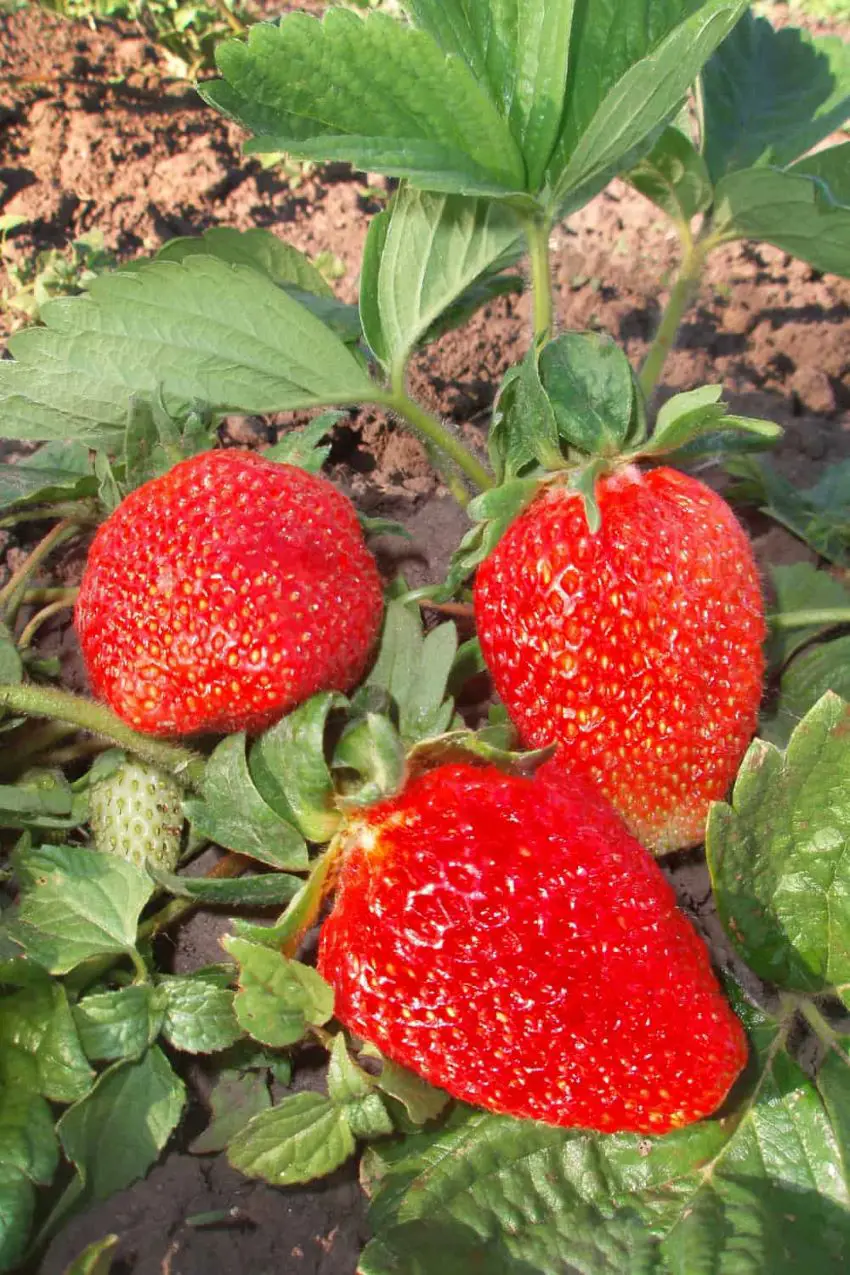
Strawberries and asparagus form a beneficial partnership in the garden. As strawberries act as a natural mulch, they shade the soil and suppress weeds, benefiting the growth of asparagus.
Conversely, asparagus plants provide shade to strawberries, protecting them from excessive sunlight and creating a balanced microclimate. This mutual support enhances overall plant health and yields for both strawberries and asparagus in the garden setting.
6. Nasturtium
Nasturtiums are valued for their pest-repelling properties, particularly their ability to lure aphids away from asparagus and other crops, serving as a natural trap crop. These plants also attract beneficial insects, enhancing garden biodiversity.
Moreover, their vibrant blooms add visual appeal, brightening up garden spaces and complementing other plants with their cheerful colors.
7. Peas
Peas are beneficial companions for asparagus due to their nitrogen-fixing ability, enriching soil fertility by converting atmospheric nitrogen into a usable form. This enhances the growth of asparagus, promoting healthier plants.
Additionally, peas provide ground cover, which suppresses weeds and reduces competition for resources like water and nutrients. These qualities make peas an excellent choice for interplanting with asparagus, supporting overall garden health and productivity.
8. Eggplant
Eggplant, a member of the nightshade family, thrives alongside asparagus, providing mutual benefits. Eggplants deter pests like aphids and beetles, contributing to natural pest control in the garden.
Moreover, the tall asparagus fronds offer shelter to eggplants, shielding them from intense sunlight and wind, and creating a favorable microclimate for growth. This symbiotic relationship enhances the health and productivity of both plants in the garden setting.
9. Tomato
Tomatoes and asparagus form a beneficial companion planting pair. Tomatoes naturally repel asparagus beetles, which helps protect asparagus plants. In return, asparagus secretes compounds into the soil that deter root nematodes, benefiting tomatoes.
This symbiotic relationship enhances the overall health and yield of both crops, making them well-suited for planting together in gardens.
10. Lettuce

Lettuce, a fast-growing crop with shallow roots, serves as ideal ground cover around asparagus. It aids in moisture retention, suppresses weeds, and thrives in partially shaded conditions under taller asparagus fronds.
This companion planting not only maximizes garden space but also enhances soil health by minimizing erosion and nutrient loss. The combination of lettuce and asparagus creates a symbiotic environment where both plants benefit from each other's presence, resulting in a productive and harmonious garden layout.
11. Spinach
Spinach is a cool-season crop that thrives alongside asparagus, benefiting from the shade the taller asparagus plants provide. This shade helps to extend spinach's growing season, especially in warmer climates where it might otherwise bolt quickly.
Additionally, spinach acts as an effective ground cover around asparagus, suppressing weeds and maintaining soil moisture. This companion planting not only maximizes garden space but also enhances the overall health and productivity of both crops.
12. Cilantro
Cilantro, known as coriander in some regions, attracts beneficial insects such as parasitic wasps and hoverflies, which help control pests that affect asparagus. Its fragrant leaves act as a natural repellent against harmful insects, enhancing the health of nearby plants.
Cilantro's quick growth and short lifespan allow for frequent planting rotations in the garden, supporting sustainable pest management practices.
13. Comfrey
Comfrey, known as a dynamic accumulator, extracts nutrients deep in the soil and redistributes them to nearby plants. Its large leaves form a dense mulch that conserves soil moisture and inhibits weed growth.
Comfrey's extensive root system enhances soil texture, particularly advantageous for promoting healthy asparagus growth.
14. Petunias
Petunias offer more than just visual appeal; they serve as effective pest deterrents, repelling aphids, tomato worms, and other common garden pests. Integrating petunias into your garden near crops like asparagus not only enhances its beauty but also provides natural protection against harmful insects.
This dual benefit makes petunias a valuable addition to any garden, contributing to both aesthetic enjoyment and practical pest management.
15. Peppers

Peppers and asparagus complement each other well in gardens. Asparagus, a perennial crop, benefits from the pest-repelling qualities of peppers, which deter pests like aphids and spider mites. In return, asparagus provides a sturdy, vertical backdrop for pepper plants to climb or lean against, optimizing space and sunlight.
This symbiotic relationship enhances garden efficiency and health, fostering a mutually beneficial environment where both plants thrive and contribute to a productive and harmonious garden ecosystem.
The Benefits of Companion Planting
Companion planting offers numerous benefits to gardeners, particularly when cultivating perennial crops like asparagus. By selecting compatible plants, gardeners can create a more balanced and sustainable ecosystem. The key advantages of companion planting include:
Pest Control
Many companion plants, such as marigolds and nasturtiums, naturally repel pests or attract beneficial insects that prey on harmful pests. This reduces the need for chemical pesticides, promoting a healthier and more environmentally friendly garden.
Improved Soil Health
Plants like peas and comfrey enrich the soil by adding essential nutrients or improving soil structure. Nitrogen-fixing plants, such as peas, convert atmospheric nitrogen into a form that plants can use, enhancing soil fertility and promoting robust growth.
Enhanced Growth and Yield
Companion plants can create favorable microenvironments, offering shade, ground cover, and wind protection. For example, lettuce and spinach provide ground cover, retaining soil moisture and suppressing weeds, while taller plants like asparagus offer shade and protection to more delicate crops.
Biodiversity and Ecosystem Balance
A diverse garden with a variety of plants fosters a more resilient ecosystem. Different plants attract a wide range of beneficial insects, birds, and other wildlife, contributing to a balanced and healthy garden environment.
What to Avoid Planting Next to Asparagus
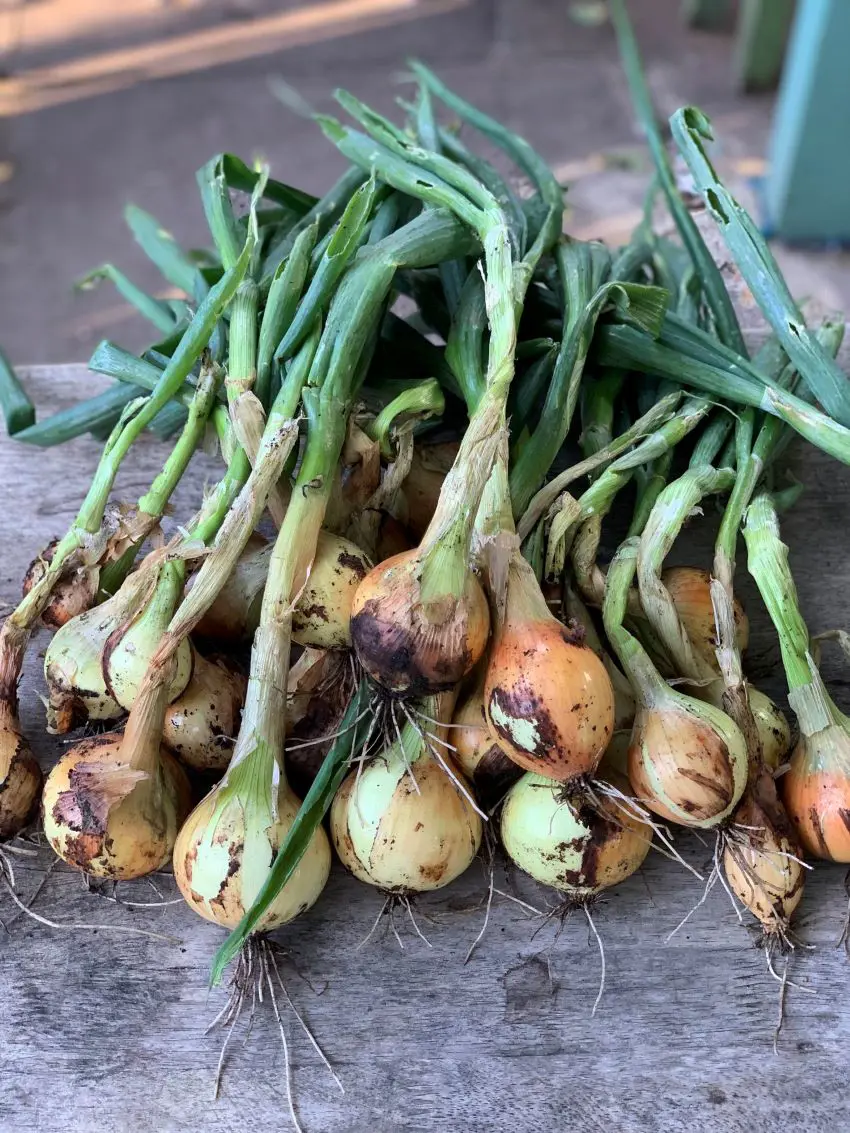
When planning your garden, it's crucial to avoid certain plants that can negatively impact asparagus. Garlic, onions, and other alliums should be kept away from asparagus beds, as they compete for similar nutrients and space.
Crops in the lily family, such as leeks, can also hinder asparagus growth. Additionally, heavy feeders like potatoes should be planted in separate areas to prevent nutrient depletion. Proper planning and companion planting can lead to a healthier, more productive garden.
Practical Tips for Successful Companion Planting
To maximize the benefits of companion planting, consider the following practical tips:
Plan Your Garden Layout
Before planting, map out your garden to ensure compatible plants are grouped. Consider the growth habits, sunlight requirements, and spacing needs of each plant to optimize their growth and interactions.
Rotate Crops
Practice crop rotation to prevent soil depletion and reduce the buildup of pests and diseases. Avoid planting the same crops in the same spot year after year to maintain soil health and fertility.
Monitor Plant Health
Regularly inspect your plants for signs of pests, diseases, or nutrient deficiencies. Early detection allows for prompt intervention, preventing the spread of problems and ensuring healthy plant growth.
Use Organic Mulch
Apply organic mulch, such as straw or compost, around your plants to retain soil moisture, suppress weeds, and improve soil health. Mulch also provides a habitat for beneficial insects and organisms that contribute to soil fertility.
Water Wisely
Ensure your garden receives adequate water, but avoid overwatering, which can lead to root rot and other issues. Use drip irrigation or soaker hoses to deliver water directly to the plant roots, minimizing water waste and promoting healthy growth.
